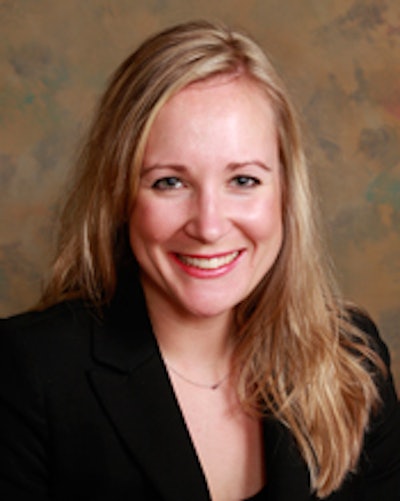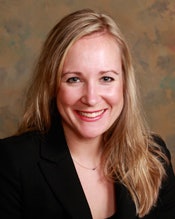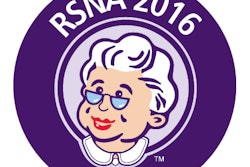
A new study of breast screening in women older than 75 has found that enough cancers are detected in this population to make screening worthwhile. The findings could shape the ongoing debate over whether older women should undergo regular screening.
The U.S. Preventive Services Task Force (USPSTF) in April 2015 released updated screening mammography guidelines that included a statement that there was insufficient evidence to continue breast cancer screening in women 75 and older. But at the recent San Antonio Breast Cancer Symposium (SABCS), researchers argued that this population still has much to gain from regular screening.
 Dr. Sarah Cate from Mount Sinai Beth Israel Medical Center.
Dr. Sarah Cate from Mount Sinai Beth Israel Medical Center."In light of the USPSTF's guidelines and the American Cancer Society's recent recommendation, we wanted to examine our own experience," presenter Dr. Sarah Cate, a breast surgeon at Mount Sinai Beth Israel Medical Center, told AuntMinnie.com. "We see many women over 75 who are extraordinarily healthy -- they're going to yoga every day -- and would continue to benefit from annual screening mammography."
Cate and colleagues sought to establish the cancer detection rate for this population at their facility and to compare it with recommended detection rates, most notably, those of the American College of Radiology (ACR), which states that the acceptable cancer detection rate with screening mammography is at least 2.5 cases per 1,000 examinations. Various breast centers have reported rates as high as 4.7 cases per 1,000, Cate said.
The study population included 2,057 patients ages 75 and older who had screening mammography exams between January 2013 and December 2014 at Mount Sinai Beth Israel. Patients who were classified as BI-RADS 0 on initial screening were reclassified based on any subsequent diagnostic imaging. The group did not stratify women based on risk factors.
During the study time frame, 96% of the women were classified as BI-RADS 1 or 2 -- that is, having negative or benign results. Forty-nine patients (2.4%) had BI-RADS 3, or "probably benign" final results, and 22 patients (1.1%) had mammograms classified as BI-RADS 4, "suspicious finding." Of the 2,057 patients in the study, 10 were diagnosed with breast cancer (0.5%).
That's not many, but it does produce a breast cancer detection rate in this population of 4.9 per 1,000 screening exams, nearly double ACR's baseline recommendation, Cate said.
"Our findings certainly can help us answer our patients when they ask whether they should continue mammography screening," she said. "Among healthy women in this age group, it's still beneficial to catch cancers early."
The study suggests that it's still crucial to consider each patient individually when it comes to breast cancer screening, according to Cate.
"If you've got a woman who is 78 and has other comorbidities, you have to ask whether you'd really take her to surgery if she were diagnosed with breast cancer," she said. "We can't just apply blanket algorithms to decide who continues with screening and who doesn't."




















